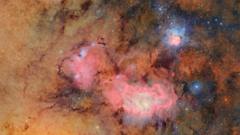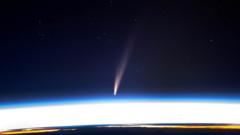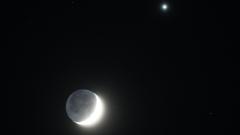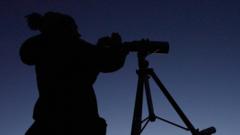As Halloween approaches, the cosmos unveils two black holes that are capturing the attention of astronomers and stargazers alike. One black hole, notorious for its repeated assaults on nearby stars, is poised to consume its second victim in just five years. Meanwhile, the other black hole is part of an intriguing "black-hole triple," challenging existing astrophysical theories about such systems.
Black holes, enigmatic entities that warp space and time, were famously established by Einstein’s theory of general relativity over a century ago. They are the remnants of stars that have collapsed inward, and our own Milky Way is home to millions of them. Each galaxy, including our Milky Way, is believed to harbor a supermassive black hole at its center, often millions or even billions of times heavier than our sun.
The active black hole first made headlines five years ago when astronomers identified an intense flare emanating from a galaxy located 215 million light-years away, specifically from a tidal disruption event dubbed AT1910qix. This flare resulted from a star straying too close to the galaxy's supermassive black hole, which then ripped the star apart while stretching its remains into a ring-like structure orbiting around the black hole. Of the debris, half fell inside while the rest dispersed into space.
Currently, the remaining material from this disrupted star has drifted outward far enough to intersect the orbit of another star. As this star journeys around the black hole, it collides with the debris every 48 hours, producing bursts of X-rays and radiation that intrigue scientists. A dedicated international research team led by Matt Nicholl of Queen's University, Belfast, monitors these dazzling interactions. Their findings were recently featured in the journal Nature, offering fresh insights into this cosmic theater of events.













